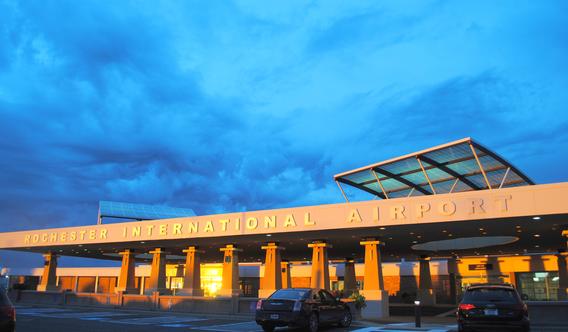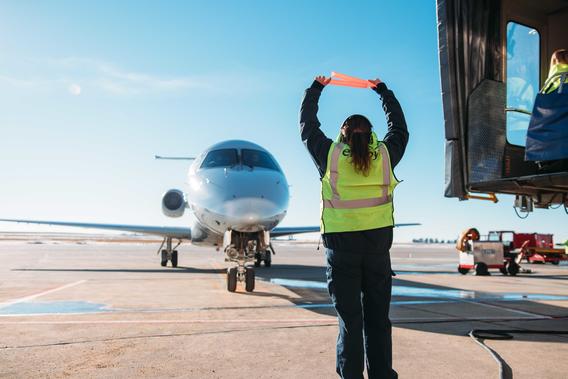
The city of Rochester, in southeastern Minnesota, is best known as the home of the world-renowned Mayo Clinic. So it’s no surprise that many operations at Rochester International Airport (RST) involve medical services.
“While all airports provide access, RST is unique in the critical users we serve daily,” says deputy airport director Kurt Claussen. “RST is one of the busiest air ambulance airports in the country, with operations occurring around the clock,” he says. FedEx operates a Boeing 757 aircraft with the vast majority of cargo related to medical care. Commercial service allows patient travelers access into Rochester and the local business community the ability to travel efficiently. “And the corporate, political, and religious leaders from around the world seeking care at Mayo Clinic rely on access through RST,” he says.
The airport provides an annual economic impact for the region of $161 million dollars in annual output, 2,911 jobs, and $73 million in annual payroll. Claussen says 2018 was a record year for total passengers in the history of RST, making it the second-busiest airport in the state. This record was achieved through strategic initiatives to increase community engagement and use of the local airport and to develop air service. “The whole RST team is incredibly proud of the new vibrancy surrounding the airport with such major growth in recent years,” he says.
RST is owned by the City of Rochester and operated by the Rochester Airport Company, a subsidiary of Mayo Clinic. The airport was founded in southeast Rochester in 1928 by brothers William and Charles Mayo. At that time, it occupied 285 acres and was owned and operated by the Mayo Foundation. In 1960, the decision was made to relocate the airport to accommodate the expansion needed to serve larger aircraft. The airport was moved to its present location on about 2,400 acres of land and called Rochester Municipal Airport. With the addition of the US customs facility in 1995, the airport was renamed Rochester International Airport.

The airport is also an important facility for general aviation (GA); businesses include Great Planes Aviation, Aviation Pathways, the Southeastern Minnesota Flying Club, and Private Jet Solutions. GA aircraft and pilot services are provided by fixed-base operator Signature Flight Support.
Claussen says the aviation industry is facing a significant pilot shortage, and small non-hub commercial airports are in jeopardy of losing air service or the ability to grow. In 2018, RST partnered with Rochester Community & Technical College and Great Planes Aviation to launch the first-ever Aviation Pilot Program at RST. “RST’s active role in this partnership will help address an issue within the aviation industry that is only predicted to become more prevalent,” he says.
Claussen has been with the RST for nearly 30 years. “I’m energized by the variety of challenges we experience,” Claussen says. “Working as a small team at an airport of our size allows us to collaborate, problem solve, and see the positive results of our hard work every day.”

